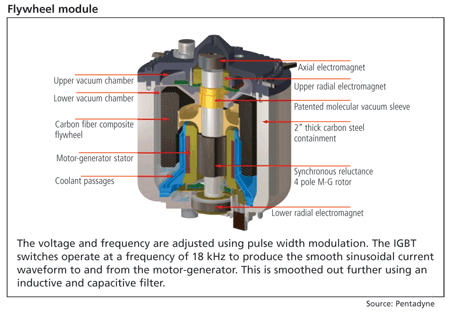Data Center Design
To insure your Data Center is developed with the best design practices available, reliable environment, emergency, security, power and infrastructure components must be implemented.
Power Systems

Energy efficient power systems to meet the demands of your data center include diesel-powered generators, uninteruptible power systems and power distribution units. Implement "green technology" systems whenever possible such as flywheel systems which will help protect the environment.
Security Systems
 To create a secure environment for your data center, physical security is mandatory to protect the expensive hardware components as well as the data contained within. An independent audit of security threats must be incorporated into the design resulting in a security assessment for the facility. A combination of access systems, security cameras, alert warning systems and human interaction protocols should be included in the security plan.
To create a secure environment for your data center, physical security is mandatory to protect the expensive hardware components as well as the data contained within. An independent audit of security threats must be incorporated into the design resulting in a security assessment for the facility. A combination of access systems, security cameras, alert warning systems and human interaction protocols should be included in the security plan.
Emergency Systems
The data center must be equipped with a state of the art Fire Supression System specifically designed for electrical equipment. Check with the National Fire Protection Association (NFPA) for the latest revisions in the National Fire Protection Codes.
Environment Systems
Data centers must remain within a particular temperature range. Typically this range is from 68 to 72 degrees. A computer room air conditioning unit (CRAC), sometimes called a High Volume Air Conditioning Unit (HVAC) is a device that maintains the temperature and humidity within that environment. Climate control is an important feature to consider when designing a data center. The path and direction of air flow is important to insure the installed devices remain within their operating temperatures. Cool air typically enters the room from the bottom of the AC unit, enters the room through raised floor tiles, then the air enters the front of the equipment racks where the air is heated while cooling the equipment and forced out the back of the rack. The heated air rises and enters the AC unit through air filters contained in the top of the unit and the process repeats itself.

Infrastructure Components
While typical equipment racks are manufactured in different sizes, standard racks are usually 42 units tall. A unit is approximately 1.75 inches, and servers measure 1u, 2u, 3u, 4u, 5u or 6u. The server racks typically house servers, storage devices, keyboard, video, mouse (KVM) switches and other peripheral equipment.


